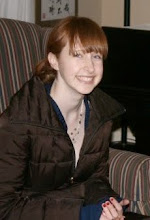 (image from mirror.co.uk)
(image from mirror.co.uk)The 2010 Academy Awards nominated an exceptional ten competitors for Best Picture from a rejuvenated entertainment field, a category not that wide since 1943. “Hurt Locker” won that honor and five others, Best Director, Original Screenplay, Film Editing, and Sound Editing and Mixing.
The films nominated for Best Picture won in other categories: “Up” won Best Animated Feature, Sandra Bullock won Best Actress for “The Blind Side”, Christopher Waltz won Best Supporting Actor for “Inglorious Basterds”, and “Avatar” won three cinematography awards.
For such a great body of artistic work to honor, this year’s Oscars show was particularly artless. Hosts Alec Baldwin and Steve Martin were flat, blundering through the night without vitality or chemistry. John Lasseter, of Pixar and Disney, cracked more smiles than any of Baldwin or Martin’s quips. His relief, in a video introducing the short film nominees, was simply “One of the things I like most about short films? They’re short.”
Cringe-worthy remarks compounded the busts. After a tearful Geoffrey Fletcher accepted his Adapted Screenplay award for “Precious: Based on the Novel Push by Sapphire”, admitting humbly “I don’t know what to say,” Martin retorted “I wrote that speech for him.”
Some lines passed lame and abrasive, and cruised towards offensive. Baldwin and Martin made two uncomfortable remarks about race, regarding nominees “Precious” and “Invictus”, and another crack about presenter Sarah Jessica Parker only weighing one pound.
On the red carpet, an ABC interviewer told Bullock, “You look great. Starving was worth it.” This year’s Best Actress did indeed look great, but because she brought grace and good humor to the stage, not because of any connection between beauty and starvation.
That much needed grace was mirrored by most of nominees, if not by the hosts and interviewers. Waltz gave the first speech of the night, holding his Supporting Actor statuette: a short and sweet metaphor of his career as a journeying ship.
Kathryn Bigelow, the first female Best Director, spoke shakily but appeared radiant. Her shoulders back, head high, and whole face graciously smiling, Bigelow thanked writer Mark Boal who “risked his life for the words on the page” and the world’s uniformed men and women.
The Best Actor award went to a refreshing Jeff Bridges, whooping to the audience and thanking “Crazy Heart” director Scott Cooper for “bringing all those great musicians to the party, man.” “Crazy Heart” also won Best Original Song for its soulful theme “Weary Kind”, written by Ryan Bingham and T Bone Burnett.
Neil Patrick Harris opened the night with a musical number more Vegas than country; the “How I Met Your Mother” star was cheeky but forced. Likewise, the dance montage set to clips from the Best Soundtrack nominees was vivacious but ill-fitting in music that belonged to gritty London streets and balloon-carried houses (“Up” won in this category).
All this superfluous showmanship did more to detract from the cinematographic achievement than to celebrate it. The extras at this year’s Oscars needed to get off the stage and let the talents do the speaking.



